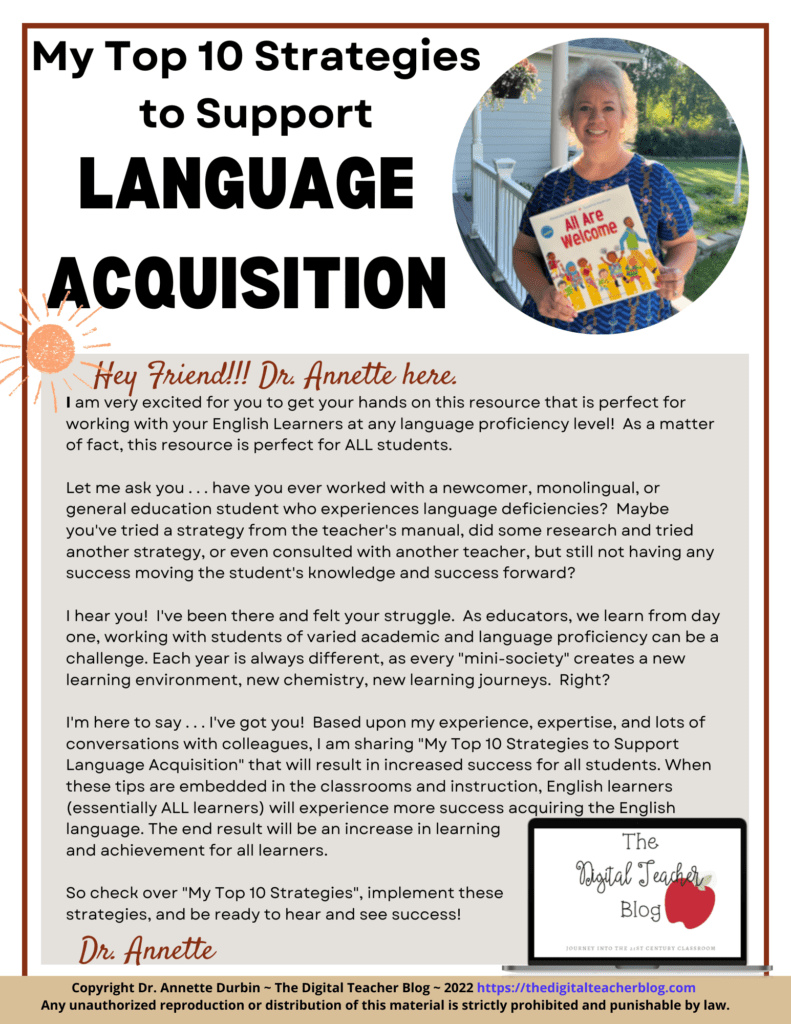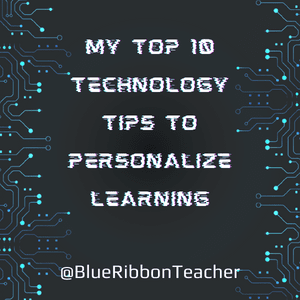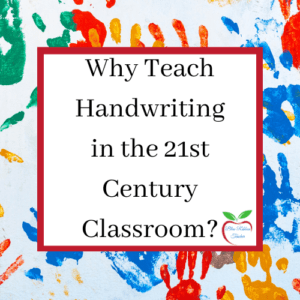Language Acquisition for ELL Students: Strategies for All
Effective strategies to support language acquisition for ELL students are needed for all children with language deficiencies. There are several ways to incorporate language acquisition instruction every day. Focusing on opportunities for students to listen and practice speaking, read and practice writing are key opportunities to decode and encode literacy. With the varied options available via technology, this is a tool to meet each student’s personal needs.
Using technology for learning has changed the way I teach. The technological world we live in today is a great tool for so many reasons. I can personalize learning with additional support to enrich student learning. I can also bring in other resources from around the world.
However, the downside of using technology has impacted language development for many children. Why? More parents engage in phone conversations instead of with their children. Students spend more time “on the screen” instead of conversing and playing.
I’m sure you can see how technology has harmed language acquisition for ELL students and all our children. This is evidenced in lower reading scores and writing challenges across many regions of our world. However, providing instruction that meets student needs and using a variety of instructional venues is paramount. You’ve heard the saying “Don’t put your eggs in one basket”. Use this thinking when instructing, so you meet the learner’s individual needs by tuning into their learning intelligences.

Language Acquisition Strategies: What is it?
Language acquisition is the ability to learn language to communicate to others. When I think about the four language areas: reading, writing, listening, and speaking, each of these areas is part of the overall concept of “language acquisition”.
The important years for language acquisition are birth to age 4.
Do you remember Gardner’s multiple intelligence? Individuals who are strong in linguistic intelligence acquire language more easily compared to others who favor one of the other eight intelligences. Tuning into your learners’ intelligence will support additional opportunities to acquire language.
As a result, individuals who are not strong in linguistics may have difficulties acquiring language compared. Reaching these individuals with instruction that supports their intelligence (learning style) is paramount for success.
For a quick review of multiple intelligences, review this video.
Language Acquisition for ELL Students: Brain Work
Did you know one of the best ways to support a child in language acquisition is to engage in conversations about a variety of topics? Conversations to encourage critical thinking and problem-solving strategies, but also conversations allowing the child to share information relevant to his/her circumstance are important.
Both conversational and academic language should be a part of conversations to promote language acquisition. Without getting into a lot of brainy discussions, these language experiences help build dendrites in the brain that allow connections for further learning to build upon. However, if you’d like to get “brainy”, check out this video.
Language Acquisition Strategies: Top Tips
As I mentioned above, building upon the student’s learning intelligence and providing opportunities to acquire language at a very young age will help the student to acquire language. Therefore, when planning lessons, it is important to prepare a variety of lessons that cover the various learning intelligences.
I’ve prepared a resource to support all educators seeking to ensure they are providing a variety of language acquisition opportunities throughout the day for their students. Keep in mind, regardless of whether students are English learners, receiving speech support, or have an IEP (Individualized Education Program), the strategies that I share are great for ALL students.
Get this free resource and use these tips to support all your students’ language acquisition.

Language Acquisition Strategies: Related Resources
Providing a variety of resources to support language acquisition is the key to success. I’ve pulled together some additional resources to assist you in this goal.
Top Strategies to Overcome Writer’s Block
How to Teach with Children’s Literature
For those of you looking to acquire a second, third, or fourth language, using the same strategies shared in my FREE resource will aid you in this goal. Additionally, here are more strategies.
Language Acquisition Strategies: Final Thoughts
Putting the technology down, engaging in conversations, and reading books and discussing books are the first steps to supporting language acquisition for all learners. These are effective strategies to support language acquisition for ELL students.
Layering additional instructional acquisition strategies that target a variety of intelligences is another way to support learners.
Finally, providing consistent practice by coordinating opportunities for listening, reading, speaking, and writing throughout the day will allow students to practice the learning they have experienced to fully master the language. These steps will improve literacy and increase learning and achievement.



